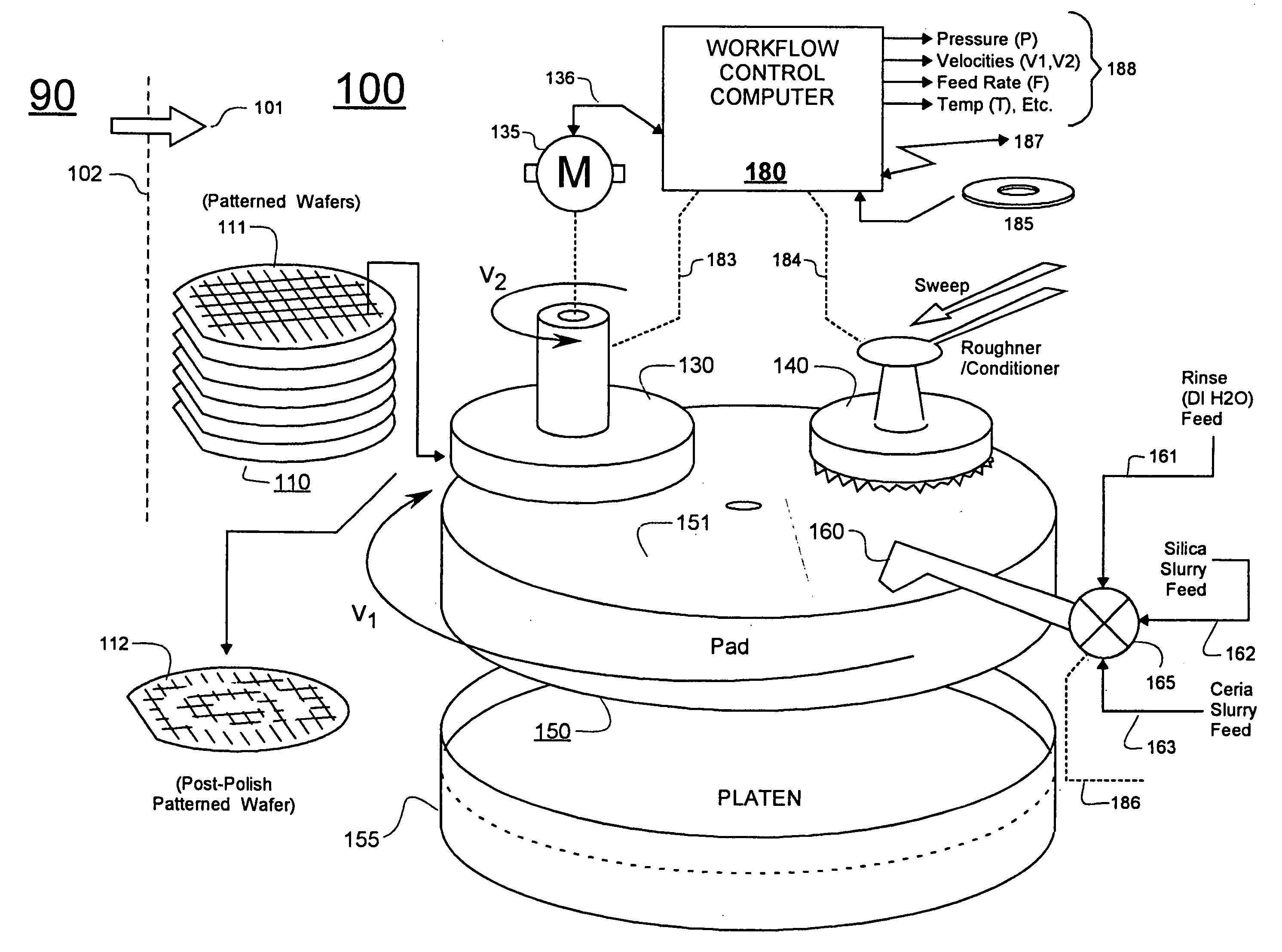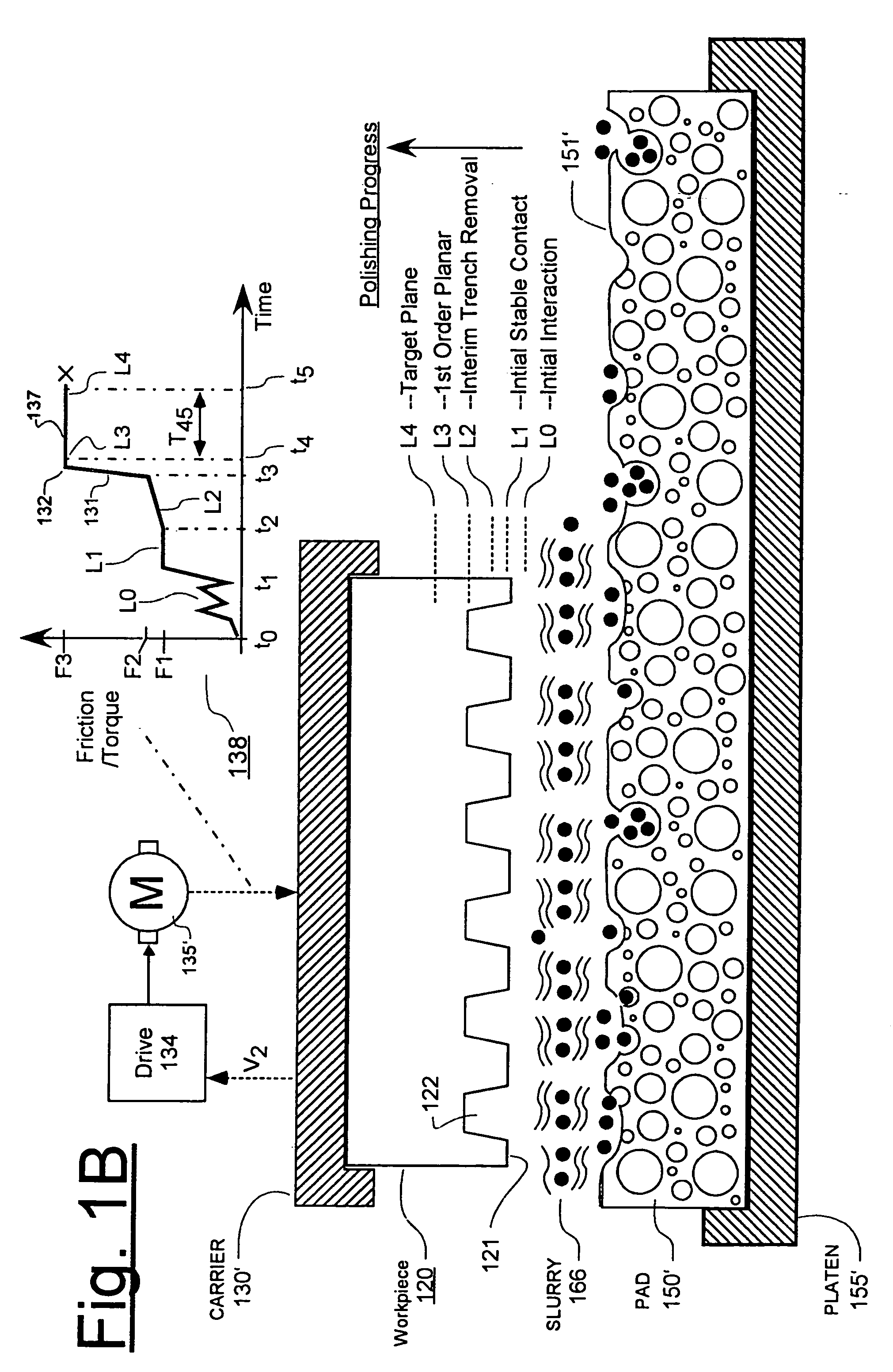Torque-based end point detection methods for chemical mechanical polishing tool which uses ceria-based CMP slurry to polish to protective pad layer
a technology of ceria-based slurry and end point detection, which is applied in the direction of manufacturing tools, grinding machine components, lapping machines, etc., can solve the problems of not all workpieces arriving at the cmp station, and are relatively imprecis
- Summary
- Abstract
- Description
- Claims
- Application Information
AI Technical Summary
Benefits of technology
Problems solved by technology
Method used
Image
Examples
Embodiment Construction
[0048]FIG. 1A is a schematic diagram of a chemical mechanical polishing (CMP) tool 100 that may be used as part of a mass production line which processes large numbers of to-be-polished workpieces. Workpieces are typically supplied in batches to the tool and these batches may include the illustrated batch 110 of patterned STI wafers (shallow trench isolation wafers). Those skilled in the art of mass production will appreciate that it is desirable to have relatively consistent polishing results from one batch of workpieces to the next, and also as between workpieces within a batch and also across the operative surface area of each wafer. In FIG. 1A, a pre-patterned batch 110 of semiconductor wafers is shown to have entered (101) the polishing tool 100 from an external location 90 by way of a sealable transfer boundary 102 of the tool. The illustrated CMP tool 100 generally uses a periodically replaced, polishing pad 150 and a supplied flow of ceria (CeO2) based CMP slurry (162) or si...
PUM
| Property | Measurement | Unit |
|---|---|---|
| time | aaaaa | aaaaa |
| friction | aaaaa | aaaaa |
| stop time | aaaaa | aaaaa |
Abstract
Description
Claims
Application Information
 Login to View More
Login to View More - R&D
- Intellectual Property
- Life Sciences
- Materials
- Tech Scout
- Unparalleled Data Quality
- Higher Quality Content
- 60% Fewer Hallucinations
Browse by: Latest US Patents, China's latest patents, Technical Efficacy Thesaurus, Application Domain, Technology Topic, Popular Technical Reports.
© 2025 PatSnap. All rights reserved.Legal|Privacy policy|Modern Slavery Act Transparency Statement|Sitemap|About US| Contact US: help@patsnap.com



